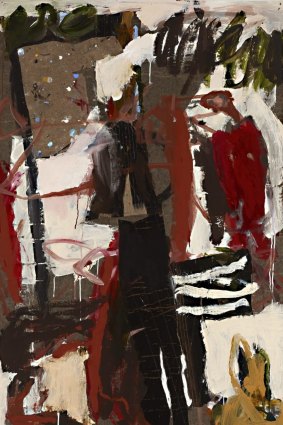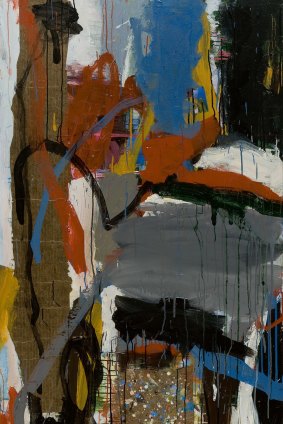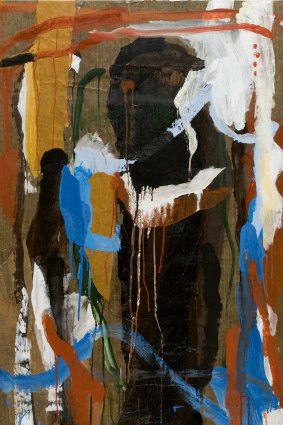This was published 9 years ago
Ann Thomson: Free Hand review
Thomson possesses the rare ability to constantly reinvent herself as an artist, writes Sasha Grishin.
By Sasha Grishin
Art Sasha Grishin
Ann Thomson: Free hand,

"Tritone" by Ann Thomson in "Free Hand"
ANU Drill Hall Gallery, Kingsley Street, Acton
Closes April 5, Wed – Sun 12-5pm

"Centauri" by Ann Thomson in "Free Hand"
Although Brisbane-born, Ann Thomson, now aged in her 80s, has spent virtually her entire life in Sydney.
Predominantly a non-figurative artist, Thomson started to exhibit in the 1960s and gained considerable acclaim in the following decade. In style, more than anything else, she related to Abstract Expressionism, but her work was contemporary with the generation that had largely turned its back on both the angst ridden expressionism and on lyrical expressionism and had embraced the cool sensibility of post-painterly abstraction.
The American art critic, Harold Rosenberg, famously declared in 1952 "At a certain moment the canvas began to appear to one American painter after another as an arena in which to act. What was to go on the canvas was not a picture but an event". This idea was to remain central to Thomson's art practice and what we witness in her paintings and drawings is not a depiction of something, but the trails of energy, of thoughts and explorations. Her exhibitions are a gathering of events and visual experiences. We as viewers on seeing this enter into the experience of the work before us.
Abstract expressionist artists frequently burn out. At its core this tendency in art is aligned to Romanticism and to the artist's fascination with the world that surrounds her. Frequently, as the artist gets older, this sense of excitement fades and the responses grow increasingly predictable and hollow in their repetition. There is also a case of audience fatigue, where the artist becomes associated with a singular mode of work and the audience response becomes tired with the often expressed opinion that the earlier work appeared fresher, purer and more authentic.

"Magog" by Ann Thomson in "Free Hand"
Ann Thomson possesses the rare ability to constantly reinvent herself as an artist, but within the same broad body of thought about art making, and to constantly convey a palpable sense of excitement in her work. This exhibition, which has been selected from her paintings and drawings from the past seven years, comes as quite an astonishing revelation by an artist who combines a sureness of touch with a striking vitality plus a heightened sense of visual intelligence. She is an artist who has stuck to her guns and who only gets progressively stronger with age.
Her series of Samurai paintings from 2008, are some of the strongest works in the exhibition. These are quite large, vertical panels with heavily worked surfaces, including collage and pigment on tarred paper, which then has been mounted on linen. They are dramatic, to the point of being almost theatrical, yet vibrant and pulsating with energy. Especially the cluster of Samurai paintings, on the left as you enter the exhibition, are some of the most amazing works which I have seen by Thomson.
Tritone, 2013, is another bold gestural work, which has a toughness, presence and a visual immediacy. It is a virtuoso performance, where all of the compositional elements are kept together within a heightened surface tension.
Ann Thomson has for over half a century produced a consistent body of art, but particularly through her recent work, as included in this exhibition, she makes the claim to be considered as a nationally significant artist.